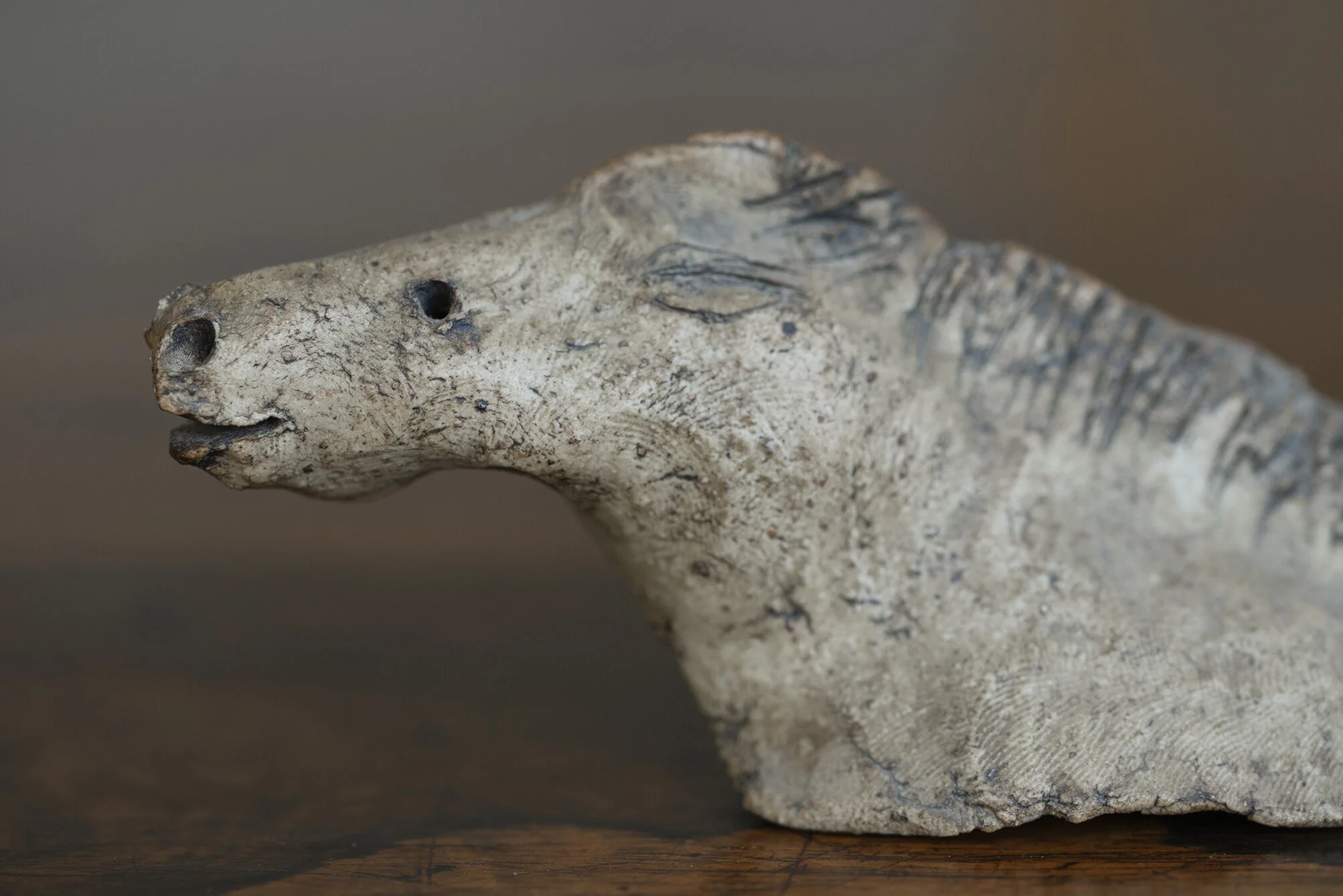
Eric James Mellon (1925 - 2014)
Although known as one of the finest British studio potters of the 20th century, Mellon originally wanted to be a painter. At the age of 13 he won a place at Watford School of Art and began a traditional art education based on the study of drawing and aesthetics. From 1945 he studied painting and printmaking at the Central School of Arts and Crafts. Mellon painted, carved in wood and, as a printmaker, investigated monotypes, wood engraving, lithographs, aquatints and etchings, but began to work increasingly as a potter from 1951. Life-drawing from female models was central but his finished works invariably had a mythological dimension. Mellon drew inspiration from visits to the circus, from portraiture and from the old masters. In 1958 Mellon, who had previously worked in earthenware, was introduced to stoneware and begun researching ash glazes, using ash from trees and plants in his garden. In 1973 Mellon was appointed head of art at Slindon College, West Sussex. He taught there for 20 years and from 1975 held summer schools at the college and in Cornwall, inviting fellow artists to work for free alongside his evening-class students.
Mellon had become a founder member of the Craftsmen Potters Association in 1958. He had more than 30 solo exhibitions, many of which concentrated on his ceramics. More recently in 2012 Mellon had a show at the Ariana Museum in Geneva, headquarters of the International Academy of Ceramics. Ceramics by Mellon are in many British public collections including Chichester's Pallant House Gallery, the Crafts Study Centre in Farnham, the Victoria & Albert Museum and the York Museums Trust, as part of the William Ismay collection.



'Horse'
Stoneware horse, circa 1967. Stoneware. 13cm long
Not for sale
